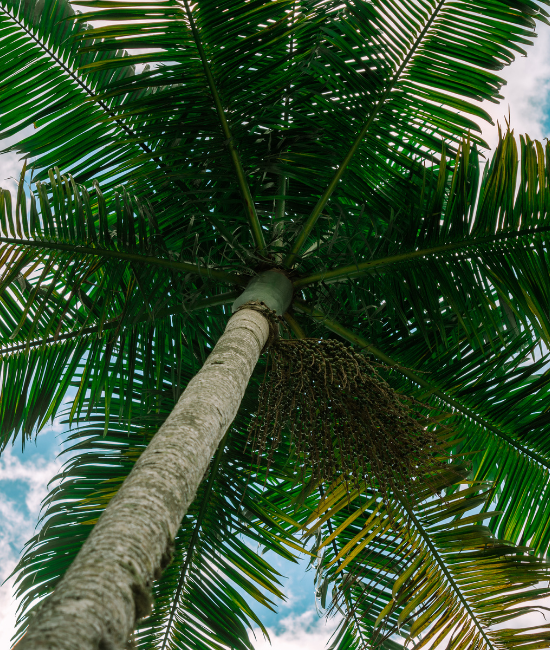A árvore de açaí é cultivada em terras firmes, onde a floresta é de várzea e ombrófila. É uma espécie climácica na dinâmica de sucessão florestal. As flores e frutos estão disponíveis ao longo do ano, com a colheita ocorrendo no período de maior produção de frutas. O processo artesanal envolve deixar os frutos de molho em água por 24 horas e depois macerá-los em uma peneira para remover a polpa. Este processo também pode ser feito em uma máquina de pulper de açaí. Após a remoção da polpa, prepara-se o “vinho” de açaí, uma bebida altamente energética e nutritiva, de cor violeta. A partir dessa polpa, são preparados sucos, sorvetes, picolés e “chicha”, uma bebida fermentada comumente consumida pelos indígenas amazônicos. A semente da palmeira de açaí é utilizada em artesanato regional para fazer pulseiras, bolsas e colares. A semente mais comum é a do açaí-solteiro. Após a limpeza, a semente torna-se branca, diferente da semente do açaí-nut, que é violeta. O estipe, ou tronco da árvore de açaí, pode ser usado como vigas estruturais para casas em áreas rurais. A árvore de açaí também produz o coração de palma, que pode ser consumido fresco, como ingrediente de saladas ou em outras receitas culinárias.


O palmito consumido é o meristema apical da palma, onde se encontram os primórdios das folhas. Remover o palmito significa eliminar a planta, pois o meristema está no ápice do estipe e sua remoção causa a morte rápida da planta, sem chances de sobrevivência. A remoção de palmito em grandes quantidades foi considerada uma exploração predatória e trouxe uma diminuição drástica nas populações de açaí no passado.

© 2021 Seeding Amazon – Todos os direitos reservados. CNPJ: 43.963.207/0001-74
| Cookie | Duração | Descrição |
|---|---|---|
| cookielawinfo-checkbox-analytics | 11 months | This cookie is set by GDPR Cookie Consent plugin. The cookie is used to store the user consent for the cookies in the category "Analytics". |
| cookielawinfo-checkbox-functional | 11 months | The cookie is set by GDPR cookie consent to record the user consent for the cookies in the category "Functional". |
| cookielawinfo-checkbox-necessary | 11 months | This cookie is set by GDPR Cookie Consent plugin. The cookies is used to store the user consent for the cookies in the category "Necessary". |
| cookielawinfo-checkbox-others | 11 months | This cookie is set by GDPR Cookie Consent plugin. The cookie is used to store the user consent for the cookies in the category "Other. |
| cookielawinfo-checkbox-performance | 11 months | This cookie is set by GDPR Cookie Consent plugin. The cookie is used to store the user consent for the cookies in the category "Performance". |
| viewed_cookie_policy | 11 months | The cookie is set by the GDPR Cookie Consent plugin and is used to store whether or not user has consented to the use of cookies. It does not store any personal data. |